Region 2403 produces its 7th and strongest M-class solar flare yet – M5.6 on August 24
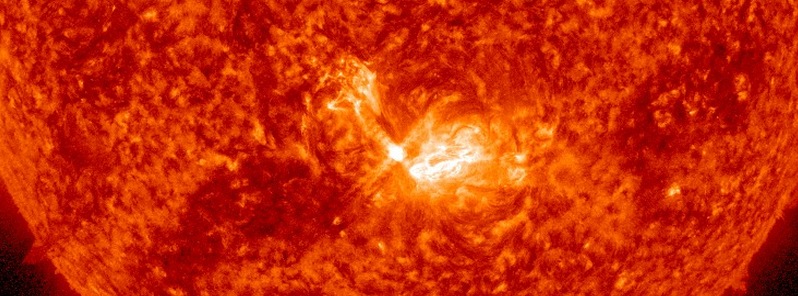
At 07:33 UTC on August 24, Active Region 2403 produced its 7th M-class solar flare, and strongest so far, since it rotated onto the Earth side of the Sun. Today's event was impulsive in nature, it started at 07:26, peaked at 07:33 as M5.6 and ended at 07:35 UTC.
There were no radio signatures that would suggest a Coronal Mass Ejection was produced.
Region 2403 is at the center of the solar disk today. It has a 'Beta-Gamma-Delta' magnetic configuration which makes it capable of producing strong to major eruptions on the Sun. CMEs produced by this region in the days ahead will most likely be Earth-directed or have an Earth-directed components.
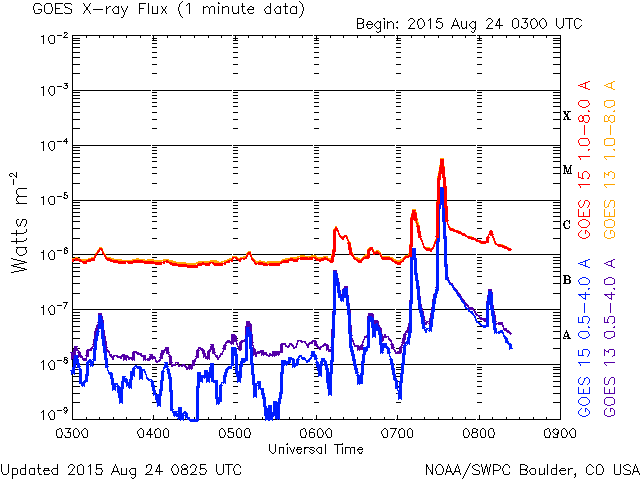
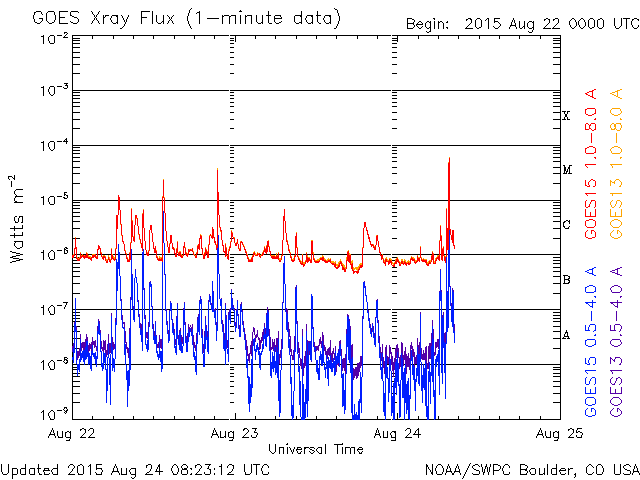
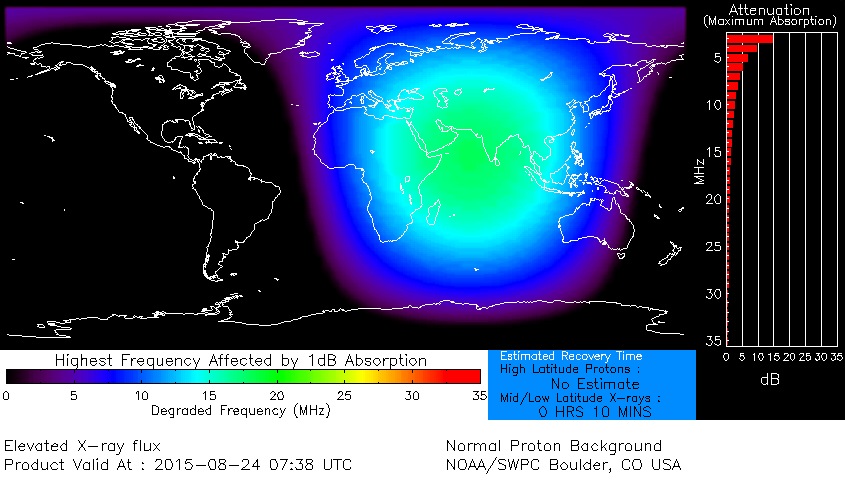
Sunspots
There are currently 2 numbered sunspot regions on the disk.
Region 2403 continues its growth, increasing in area and number of spots.
Region 2404 (Beta) is exhibiting decay in its intermediate and trailer spots.
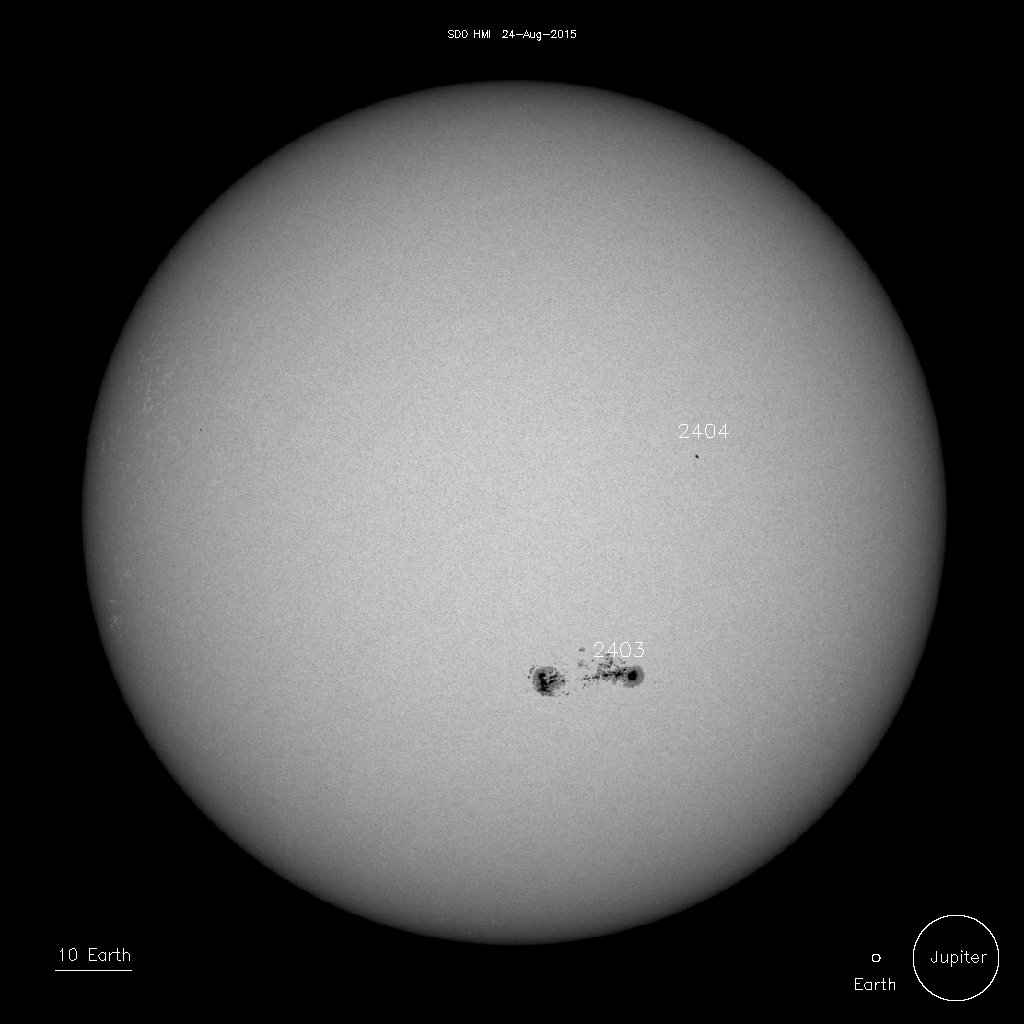
Sunspots on August 24, 2015. Credit: NASA SDO/HMI.
2403 – Beta-Gamma-Delta
2404 – Beta
Forecast
SWPC forecasters expect solar activity to be at moderate levels (R1-R2, Minor-Moderate) over the next three days (August 24 – 26), with a slight chance for X-class flares (R3-Strong or greater) due to the flare potential of Region 2403.
A further enhancement in solar wind parameters is expected mid to late August 24 with the arrival of a combination of the August 21 and 22 CMEs. Solar wind speeds will likely increase above 600 km/s with the arrival of the CMEs. Activity is expected to persist into August 25 with a slow decline by August 26.
The greater than 2 MeV electron flux is expected to be at normal to high levels through August 26 due to combined coronal hole high speed stream (CH HSS) and CME effects. A slight chance for a greater than 10 MeV proton event (S1-Minor) exists on August 25 and 26 as Region 2403 transits into a more geoeffective location.
CH HSS activity is expected to persist through August 24. Later in the day, an anticipated arrival of the August 21/22 CMEs will likely cause unsettled to G1 (Minor) storm conditions. Quiet to active levels are expected to persist through August 26 as the CH HSS and CME influence gradually wane, SWPC said in their Forecast Discussion issued 12:30 UTC today.
Featured image: M5.6 solar flare from region 2403. Credit: NASA SDO/AIA 304.

Commenting rules and guidelines
We value the thoughts and opinions of our readers and welcome healthy discussions on our website. In order to maintain a respectful and positive community, we ask that all commenters follow these rules:
We reserve the right to remove any comments that violate these rules. By commenting on our website, you agree to abide by these guidelines. Thank you for helping to create a positive and welcoming environment for all.